Do cracks in your travertine tile have you wondering how to repair them without damaging the beauty of the stone? Cracks, chips, and dents can happen for a variety of reasons including wear and tear over time or accidental damage.
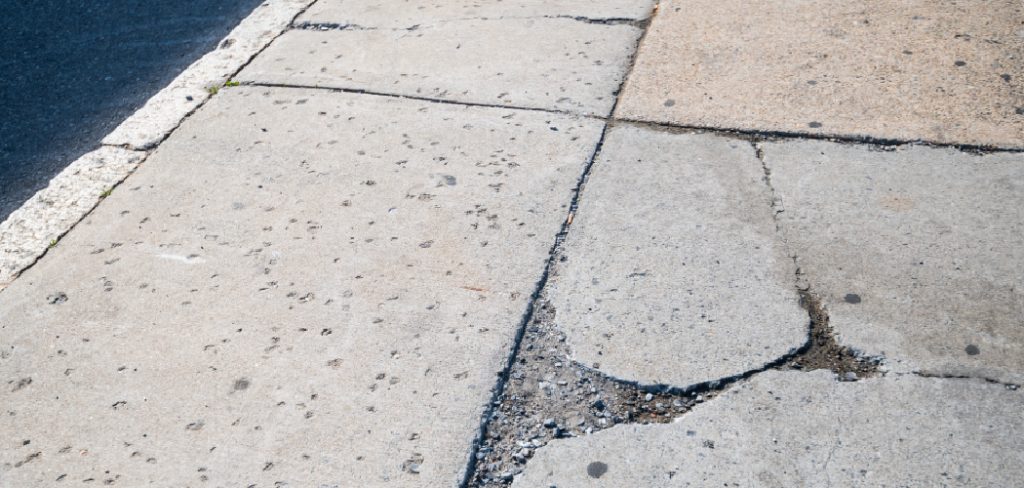
Before you panic, know that many types of cracks can be easily fixed with some persistence and elbow grease. In this post, we’ll explain why it’s important to repair cracks in your travertine tile quickly and provide detailed steps about how to repair cracks in travertine tile!
Travertine tile is commonly used in bathrooms, showers, and other areas around the house due to its beauty and ease of installation. However, one drawback to travertine tiles is their vulnerability to cracking.
If left unrepaired, cracks can create a dangerous environment by leaving sharp edges exposed or impairing the integrity of surrounding tiles. Fortunately, it’s relatively easy to repair small cracks in travertine tile with relative confidence that you won’t do additional damage during repairs – making it a great DIY project!
What Causes Cracks in Travertine Tile?
There are many reasons why cracks may develop in travertine tile. Such as:
1. Physical Stress
One of the most common reasons for cracked travertine tiles is physical stress. This can include damage from heavy objects or sharp edges, as well as vibration and impact from things like walking on the tile. To prevent this type of damage, be sure to use protective padding underneath heavy furniture and appliances, and avoid placing anything sharp or abrasive near your travertine tile.
2. Water Damage
Travertine tile is susceptible to water damage, especially if the grout between the tiles has started to crack or wear away. If you notice any signs of water damage on your travertine tile, it’s important to take action right away by sealing and recaulking the tiles and grout. This can help prevent further damage from occurring and keep your travertine tile looking beautiful for years to come.
3. Chemical Exposure
Travertine tile is also vulnerable to damage from exposure to certain chemicals, such as acids and alkalis that are commonly found in household cleaners and other products. To avoid this type of damage, make sure to always use mild and non-abrasive cleaning products on your travertine tile, and avoid using harsh chemicals that could potentially harm the surface.
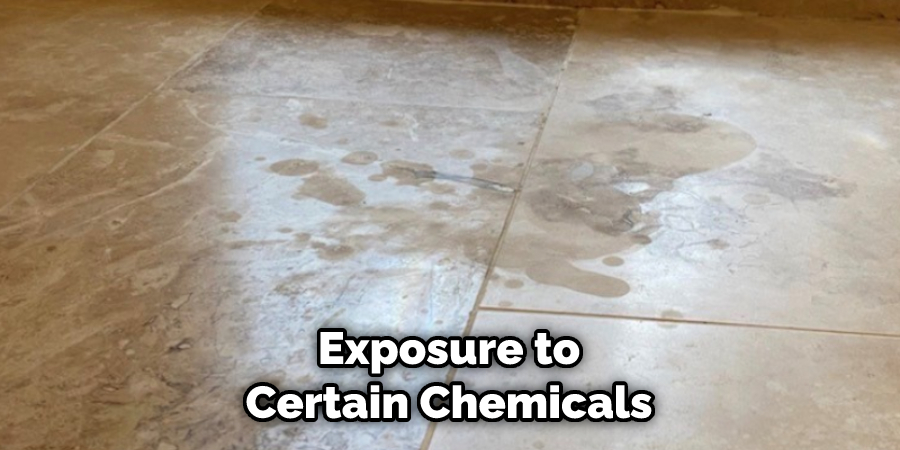
How to Repair Cracks in Travertine Tile in 7 Easy Steps
Step 1: Inspect the Crack to Determine the Cause
The very first step is to carefully inspect the crack to determine what may have caused it. Some common causes of cracks in travertine tile include heavy impacts, structural damage from earthquakes or other natural disasters, and excessive moisture buildup.
Step 2: Clean and Dry the Area
Once you have identified the cause of your crack, you will need to clean and dry the area thoroughly before beginning the repair process. Use a clean, dry cloth to wipe away any dirt or debris from around the crack and surrounding area. If any moisture is present in the surrounding area, be sure to let it dry completely before proceeding.
Step 3: Prepare the Cracks for Filling
In order to effectively repair your travertine cracks, you will need to prepare the surface. This means scraping and sanding away any loose or chipped pieces of tile, as well as all dirt, dust, and other debris.
Step 4: Fill the Cracks with Travertine Filler
Once you have properly prepped the surface, you can begin to fill the cracks with a high-quality travertine filler. Just be sure to work in small sections at a time, applying even pressure and smoothing out any bumps or uneven areas as you go.
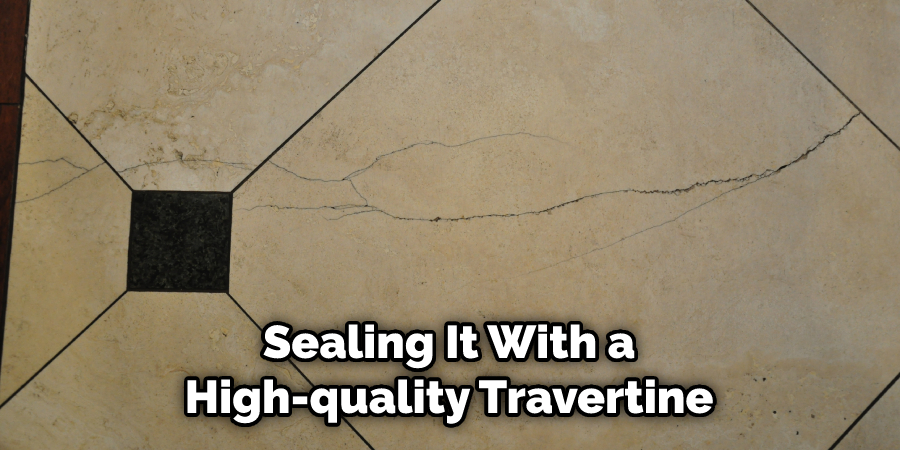
Step 5: Finish the Repair with a Travertine Sealer
Once your travertine filler has had sufficient time to dry, you will want to finish off the repair process by sealing it with a high-quality travertine sealer. This will help prevent future cracks and keep your tile looking beautiful for years to come.
Step 6: Maintain Your Travertine Tile
Finally, to help ensure that your travertine tile stays in top condition, you should take steps to maintain it on a regular basis. This might include cleaning and sealing every few months, or re-sealing every year or so as needed.
Step 7: Contact a Professional for Help
If you are not comfortable attempting the repair on your own, or if the damage to your tile is extensive and beyond what you feel capable of handling, it is always best to seek professional assistance. A skilled travertine repair specialist will be able to quickly and effectively fix any issues with your tile, ensuring that it looks as good as new.
Whether your travertine tile has sustained minor chips and cracks or more serious damage, there are steps that you can take to repair these issues and restore your tile’s appearance. By following these simple steps, you can easily repair cracks in travertine tile and get your home looking its best once again.
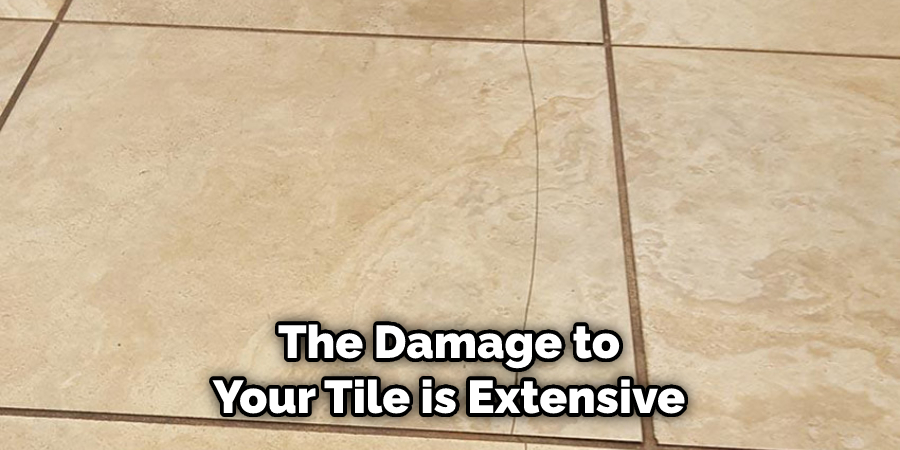
Some Tips to Prevent Cracks in Travertine Tile
1. Do Not Install Travertine Tile Overly Thin
One of the key factors that can cause cracks in travertine tile is the thickness of the tiles themselves. Ideally, you should install your travertine tiles so that there is at least 1/4-inch of material between them and any adjacent surface or object. This will help to ensure that the tiles are not too brittle and will be better able to withstand any pressure or movement.
2. Take Care With Water Exposure
Travertine is a type of stone that is susceptible to damage from water exposure, so it is important to take precautions when using travertine in areas that are prone to moisture or humidity.
For example, you may want to avoid using travertine tiles in your bathroom or kitchen, as these are typically high-moisture areas. Additionally, you should be mindful of water exposure when cleaning your travertine tiles, and take care not to use harsh chemicals or cleaners that can damage the surface of the tile.
3. Consider Using a Sealant or Protective Coating
If you are concerned about your travertine tiles cracking or chipping, one way to help prevent this from happening is to apply sealant or a protective coating over the surface of the tiles. This will provide an extra layer of protection that can help to reduce the risk of damage, while also helping to keep your travertine tiles looking their best for many years to come.
While cracks and chips in travertine tile can be unsightly and frustrating, they are generally relatively easy to repair. If you notice a crack or chip in your tiles, simply take some time to clean the affected areas and apply a repair solution or filler to the damaged area.
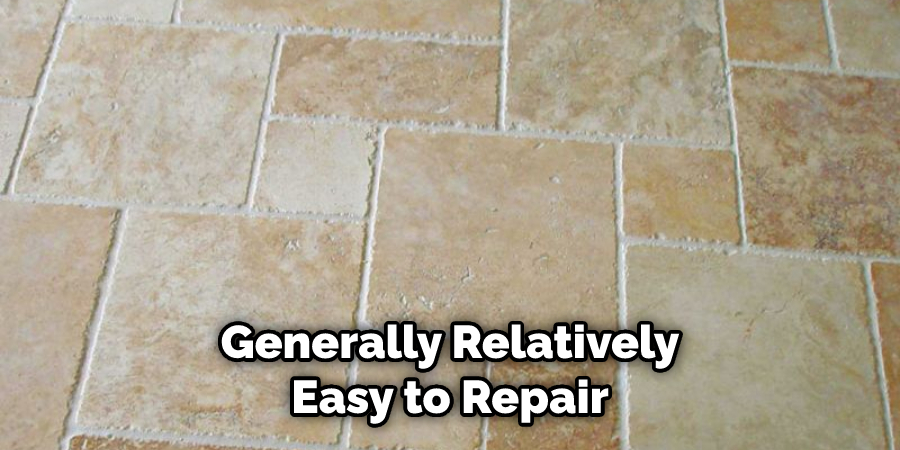
Then, you can simply buff out any excess material and allow it to dry completely before touching up your tiles as needed. With proper care and maintenance, you can help prevent cracks and chips in your travertine tiles, making them last for many years to come.
Conclusion
Now that you know how to repair cracks in travertine tile, you can fix any damage yourself without having to replace the entire tile. By following these simple steps, you will have your tiles looking like new again in no time!
Plus, this is a much cheaper alternative than replacing the entire tile or hiring a professional to do it for you. So next time you see a crack in your travertine tile, don’t panic! Just follow these easy steps and repair it yourself.
Although it may seem daunting to try and repair cracks in travertine tile, the process is actually quite simple. By following the proper steps and using the right materials, you can have your tile looking as good as new in no time. With a little bit of effort, you can keep your travertine tile floors looking beautiful for years to come.
